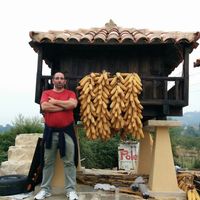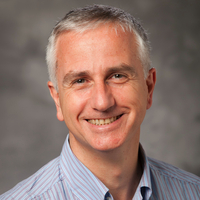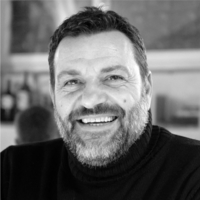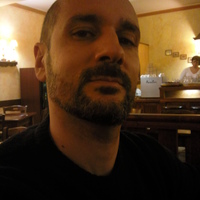
Giuseppe Cacciaguerra
- Degree (Università di Catania, 1996-2001).
- School of Archaeology (Università del Salento, Lecce, 2002-2004).
- Fellow Professor of "Islamic Art" (Università degli Studi di Catania, 2009/2010).
- Research Fellow (IBAM-CNR, Catania, 2010).
- Teaching Assistant of Archaeology (Università di Catania, 2011/12-2016/17).
- PhD (Università di Catania, 2011-13).
- Research Fellow (IBAM-CNR, Catania, 2014).
- Researcher, non-Tenured (IBAM-CNR, Catania, 2015-2017).
- Researcher, Tenured (IBAM-CNR, Catania, 2017-2019).
- Researcher, Tenured (ISPC-CNR, Catania, 2019 - 2022).
- Senior Researcher, Tenured (ISPC-CNR, Catania, 2023 - Today).
- School of Archaeology (Università del Salento, Lecce, 2002-2004).
- Fellow Professor of "Islamic Art" (Università degli Studi di Catania, 2009/2010).
- Research Fellow (IBAM-CNR, Catania, 2010).
- Teaching Assistant of Archaeology (Università di Catania, 2011/12-2016/17).
- PhD (Università di Catania, 2011-13).
- Research Fellow (IBAM-CNR, Catania, 2014).
- Researcher, non-Tenured (IBAM-CNR, Catania, 2015-2017).
- Researcher, Tenured (IBAM-CNR, Catania, 2017-2019).
- Researcher, Tenured (ISPC-CNR, Catania, 2019 - 2022).
- Senior Researcher, Tenured (ISPC-CNR, Catania, 2023 - Today).
less
Related Authors
Juan Antonio Quirós Castillo
University of the Basque Country, Euskal Herriko Unibertsitatea
Michele R . Massa
Bilkent University
Maurizio Forte
Duke University
Carlos Fabião
Universidade de Lisboa
Jonathan Prag
University of Oxford
VITOR OLIVEIRA JORGE
Faculdade de Letras da Universidade do Porto
Barbara Voss
Stanford University
Julian Thomas
The University of Manchester
Stefano R L Campana
University of Siena / Università di Siena
Lorenzo Verderame
Università degli Studi "La Sapienza" di Roma
InterestsView All (245)










Uploads
Late Roman and Medieval Settlements and Landscapes by Giuseppe Cacciaguerra
Late Roman and Medieval Ceramics by Giuseppe Cacciaguerra
Excavation and survey contexts recently investigated by the authors in Eastern, Central-Southern and Western Sicily form the privileged starting point for the analysis. We attempt to use and connect all the data at our disposal for a first effort at a synthetic overview, with particular attention towards aspects of continuity/rupture between 6th and 8th century.
della banca dati, della piattaforma GIS e del WebGIS, i tre elementi a cui è demandato il compito di archiviare, gestire, analizzare e rendere liberamente accessibili, su base geospaziale, i dati relativi alla complessa stratificazione urbana della città di Catania.
evolution of an urban landscape from prehistory to the present day. An
extraordinary example of a study that still presents numerous unanswered questions, which inhibit a complete reconstruction of the city’s long history.
This is mainly the result of inadequate publications and the scarce sharing of the data between those Research, Protection, or Local Administration bodies who own it, which leads to negative effects even in terms of territorial planning.
The OpenCiTy Project, set up by IBAM-CNR, was born out of the
ascertainment of such limitations and aims to create a free and shared “research environment”, in which to channel the heterogeneous mass of data relating to the entire cultural patrimony of the city under a common spatial denominator and on a WEbGIS portal, that developed entirely with the use of Open source software, was specifically devised as a channel for the dissemination and free sharing of the processed historical-archaeological contents.
linked to the research needs, the protection, enjoyment, appreciation and promotion of the Cultural Heritage. The core of the project consists of a relational database specifically structured and placed inside an Open Source GIS Platform, allowing a full management and analysis of the data on a geographic basis. The data in the platform will cover different areas of interest. The archaeological, monumental, environmental and cultural evidence of
Catania are stored with a high level of detail in order to offer a better understanding of the complex urban stratification. The final output is represented by a webGIS platform showing the information on geographical base.
anche dei racconti e delle curiosità nate intorno ad esso. Perché è solo con la conoscenza che la riconquista fisica di uno spazio può tramutarsi in ben più duraturo acquisto culturale.
La complessità del tema e l’ampia varietà dei contesti necessitano quindi di un approccio multidisciplinare e di un costante dibattito metodologico, aspetti che sono stati in passato poco praticati.
Durante il webinar i relatori provenienti da diverse università, enti di ricerca e istituzioni italiani affronteranno il tema attraverso l’esame di diversi casi studio compresi tra l’età islamica e la prima età moderna (X-XVI secolo) e si confronteranno sui modi e i tempi di creazione e formazione di nuovi contesti urbani e paraurbani, sulla loro organizzazione e strutturazione e sul ruolo rivestito da stato, aristocrazie e comunità.
https://www.ispc.cnr.it/it_it/2023/11/09/cnr-ispc-on-air-fondazione-e-formazione-di-citta-e-terre-nuove-in-sicilia-tra-medioevo-e-prima-eta-moderna/?fbclid=IwAR0uP9W6ksKVliRsIj7UW21vV5C42YeYXVm6jwqZNgw8JxlWhHIP2LSNNiQ
Tra il bassomedioevo e la prima età moderna la Sicilia è stata una regione in cui si sono sperimentate numerose forme di fondazione e processi di formazione urbana. La successione di differenti sistemi politici e ideologici e organizzazioni socio-economiche, infatti, hanno dato vita a città e centri di popolamento peculiari per topografia, impianto urbanistico e sviluppo urbano e architettonico.
La complessità del tema e l’ampia varietà dei contesti necessitano quindi di un approccio multidisciplinare e di un costante dibattito metodologico, aspetti che sono stati in passato poco praticati.
Durante il webinar i relatori provenienti da diverse università, enti di ricerca e istituzioni italiani affronteranno il tema attraverso l’esame di diversi casi studio compresi tra l’età islamica e la prima età moderna (X-XVI secolo) e si confronteranno sui modi e i tempi di creazione e formazione di nuovi contesti urbani e paraurbani, sulla loro organizzazione e strutturazione e sul ruolo rivestito da stato, aristocrazie e comunità.